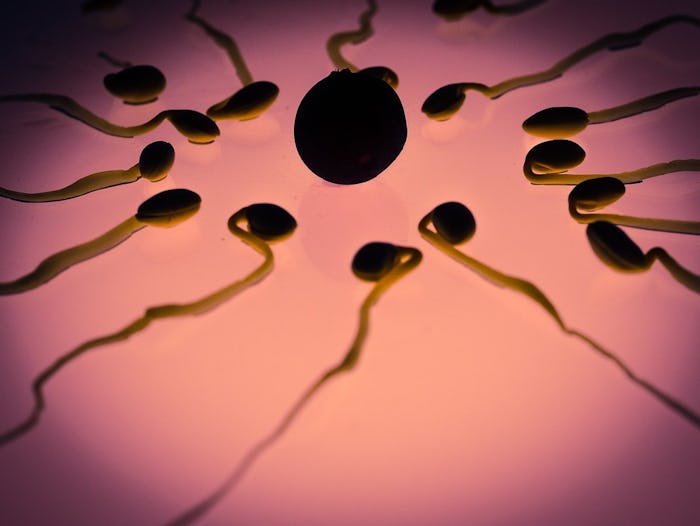When it comes to procreation (I know, such a fun word), the fun part comes first: having all the sex. But after the deed is done, it's time to let science take over and make a baby. If you have conception on the brain, you'll want to know how to keep sperm in to get pregnant, so your chances of producing a mini me from an afternoon romp increase. Although science has yet to prove it's validity, many women believe that giving this old fashioned baby making method a try just might give you what you want. And even if it doesn't work the first time, no harm can come from trying.
Getting those little swimmers exactly where you want plays a major role in trying to become pregnant — so don't dash away too quickly once the deed is done. According to The Bump, you should lounge around in bed for 20 minutes or more after sex to let the magic happen. Hanging around for a bit allow the sperm to pool at the top of the vagina, which is the entry point for starting their journey of fertilization. Don't worry about propping up your hips up or pulling your knees to your chest — neither of these positions have been proven to make the sperm-to-egg connection any more successful.
Speaking of positions, there is no code to crack for the best sex position for conceiving. Feel free to let loose and enjoy any position that strikes your fancy while you're in baby making mode. As Dr. Serena Chen reported on the website for Parents magazine, "when a man ejaculates, sperm swims out, goes directly into the cervical mucus and into the fallopian tubes," regardless of which position you're using. Believe it or not, all this happens pretty fast, meaning whatever position your were doing it in has no barring on the outcome.
But even the best of the swimmers can create a bambino without an egg, which means you're going to need to be on top of your ovulation game to time things accurately. The only time you can get pregnant is the point in your cycle when you're ovulating. According to Mayo Clinic, there are four ways to know when you're ovulating: track your period for a few months, examine your cervical mucus, track your basal body temperature, or use an ovulation predictor kit.
Typically, ovulation happens between day 11 and day 21 of a woman's menstrual cycle, according to the website for the American Pregnancy Association. One of the tell-tale signs that you're dropping eggs is when your cervical mucus changes from watery to sticky. When you notice this change, don't hesitate. Grab your partner and get down to business, because as What To Expect pointed out, the window for a viable egg is typically between 12 and 24 hours.
Attempting to get pregnant can be a stressful time for some women. To keep yourself from worrying too much, do your ovulation math, then have fun with the sex. Use the "rest and wait" tactic to keep the sperm in as well as your time to catch up on shows and relax.
